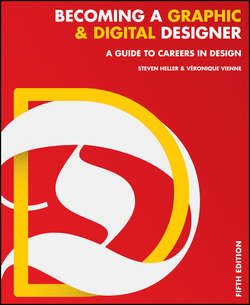Читать книгу Becoming a Graphic and Digital Designer - Heller Steven - Страница 5
На сайте Литреса книга снята с продажи.
Part 1
Graphic Design
ОглавлениеWhat is graphic design? That question has vexed most practitioners who were compelled to answer when a parent asked, “What is it you do again?” Graphic design was once enigmatic – a specialized field that was visible and yet a mystery. Then the computer revolution of the late 1980s brought enlightenment. Apple Computer ran a TV commercial showing a pair of hands doing a pasteup. To paraphrase the voice-over: This is what a graphic designer does. With the Apple you no longer need a graphic designer. With one 30-second spot, the world was introduced to graphic design and told it was obsolete – anyone with a Macintosh could do it. That was the age of “desktop publishing,” a moment in time when it seemed that graphic design was about to be devalued. But clear heads and machines prevailed. Instead of taking over the field, the Mac became its foremost tool. What's more, graphic designers became culturally significant as communicators, aestheticists, stylists, and even authors.
The world became aware that all those beautiful (and not-so-beautiful) books, book covers, posters, magazines, record covers, typefaces, signs, packages, exhibitions, trademarks, and information graphics were all components under the graphic design umbrella. Graphic design is not just about making pasteups and mechanicals or the equivalent on computer using InDesign; it is about conceptualizing, conceiving, imagining, constructing, producing, managing, and realizing an aesthetically determined functional piece of visual communication. Once it was primarily paper; now graphic design affects screens of all kinds. But the fundamental definition of graphic design as a way of organizing, “formatizing,” and functionalizing word and image remains constant.
Graphic designers all speak the same basic language (and use the same jargon), but graphic design is not an intuitive endeavor: Some designers are more adept at fine typography than others, who may be better skilled at sequential narratives or information management. It cannot be done without knowledge of the task, genre, or medium in question. Graphic design must be studied, learned, and continually practiced to achieve even basic proficiency. To go further, to transcend simple service and craft with inspiring work, graphic design must be totally embraced – body and soul.
This section offers a brief survey of some of the current design specialties and hybrids. Some of the viable opportunities discussed in the previous edition have disappeared or are now marginalized. Print work is increasingly being integrated with digital (online or handheld). The following interviews provide insight into and wisdom about the overall graphic design experience – how people became designers and how their careers evolved – with emphasis on each designer's unique specialties.
